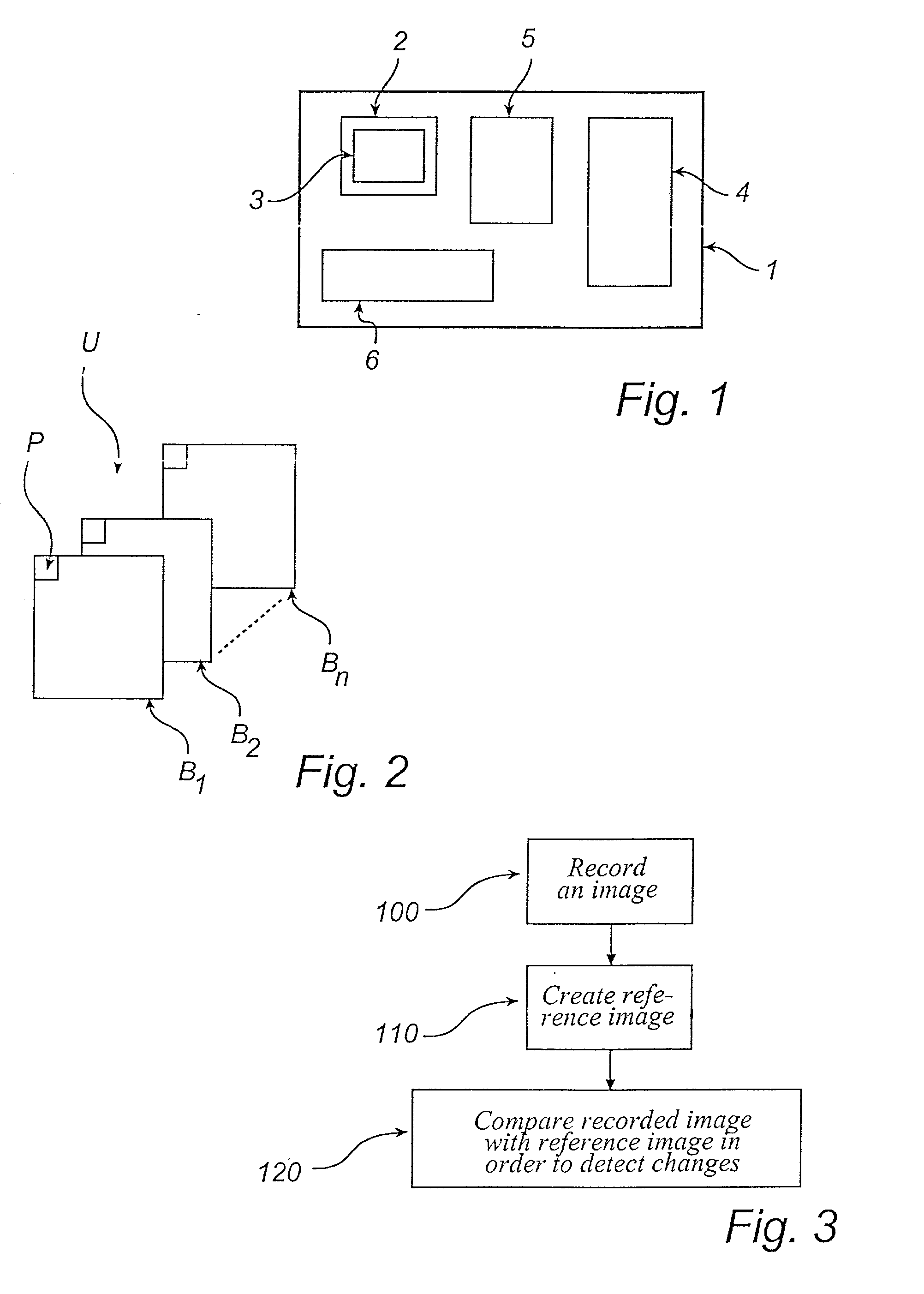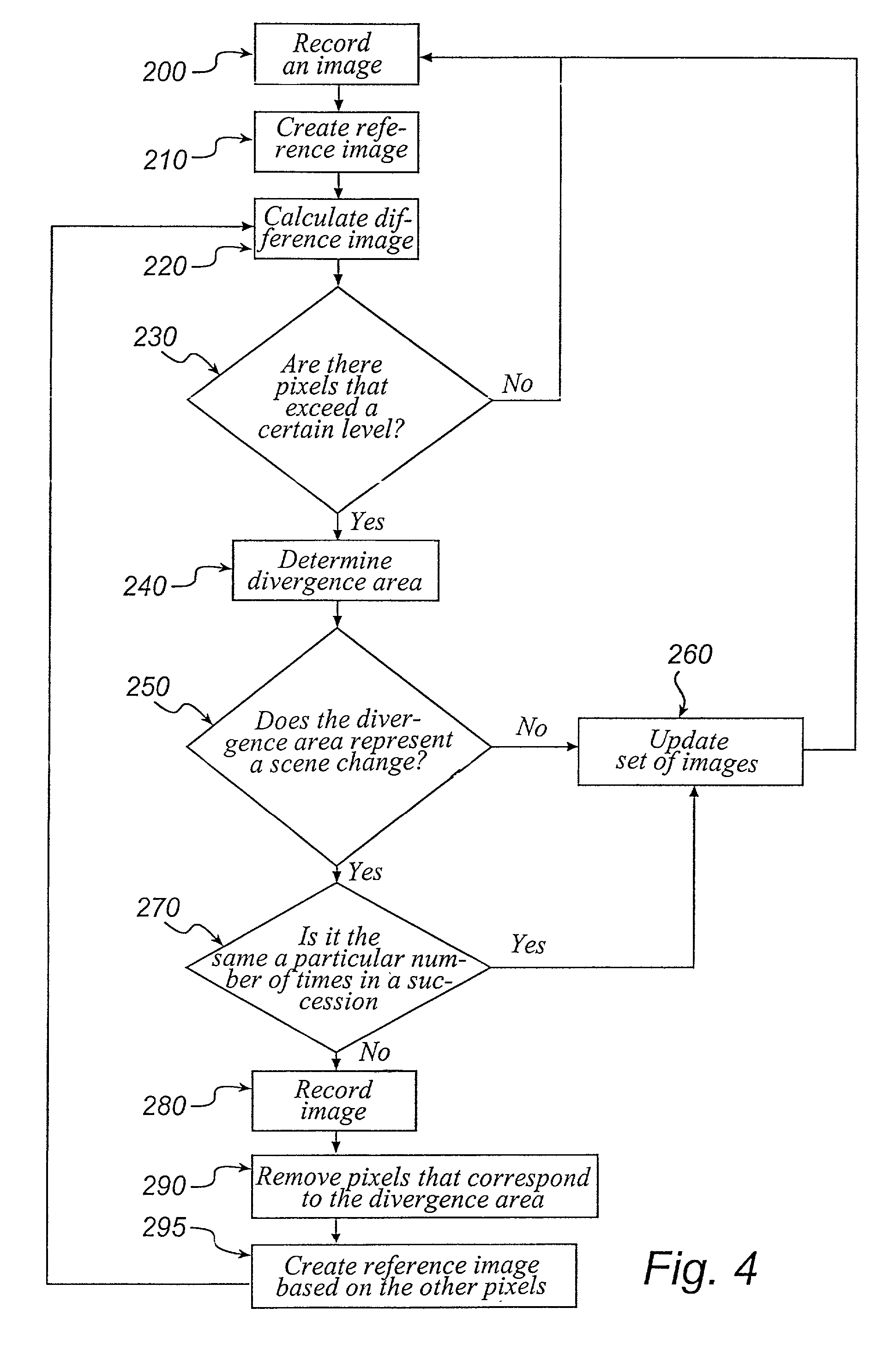Multiple backgrounds
a multi-background and background technology, applied in the field of multi-backgrounds, can solve the problems of intruders in the monitored area, time-consuming, monotonous and stressful work, and expensive monitoring forms
- Summary
- Abstract
- Description
- Claims
- Application Information
AI Technical Summary
Benefits of technology
Problems solved by technology
Method used
Image
Examples
Embodiment Construction
[0058] FIG. 1 shows schematically a monitoring unit 1, which comprises a light-sensitive sensor 2 with an associated lens arrangement 3 which together are arranged to continuously record images of a monitored area. The monitored area can, for example, be premises in which people are not permitted. The monitoring unit 1 further comprises a central processing unit 4, which is arranged to process image information, a memory 5, in which previously recorded images can be stored, and a communication unit 6 for communication with an external unit. This communication can be carried out wirelessly. The external unit can, for example, be a central alarm center to which information is sent if an alarm situation arises, which in the example mentioned above would be if a person were to enter the monitored premises.
[0059] The present invention will now be explained further utilizing FIG. 2 and the two flow charts in FIGS. 3 and 4. A monitoring unit 1 can, for example, be placed in a corner of a r...
PUM
 Login to View More
Login to View More Abstract
Description
Claims
Application Information
 Login to View More
Login to View More - R&D
- Intellectual Property
- Life Sciences
- Materials
- Tech Scout
- Unparalleled Data Quality
- Higher Quality Content
- 60% Fewer Hallucinations
Browse by: Latest US Patents, China's latest patents, Technical Efficacy Thesaurus, Application Domain, Technology Topic, Popular Technical Reports.
© 2025 PatSnap. All rights reserved.Legal|Privacy policy|Modern Slavery Act Transparency Statement|Sitemap|About US| Contact US: help@patsnap.com



